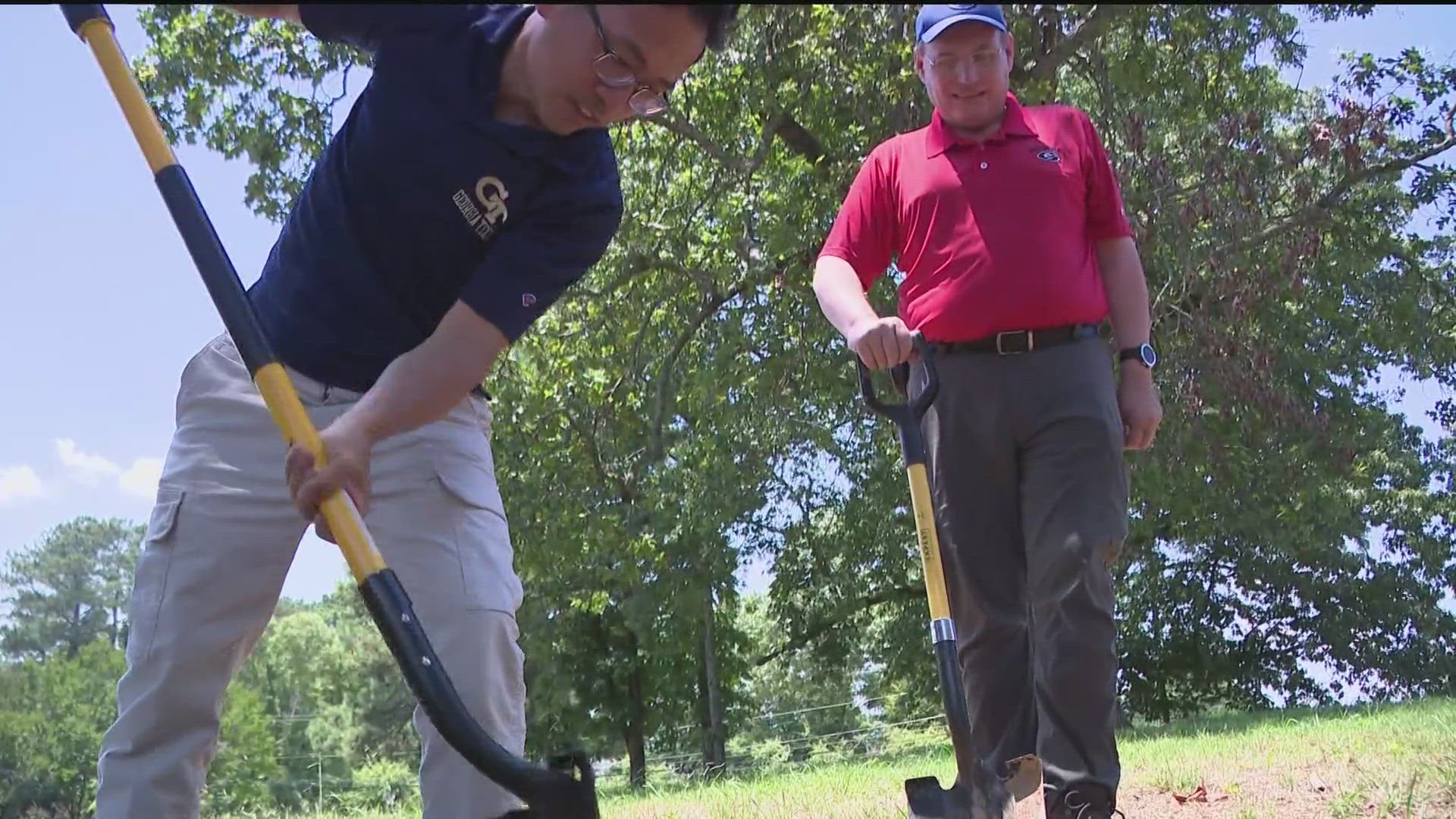BUFORD, Ga. — A series of four earthquakes in a week around Lake Lanier have had residents wondering two questions -- why are they happening, and when will they stop?
A magnitude 2.2 earthquake occurred at 3:17 a.m., about 2.5 miles north of Buford early Thursday morning. The depth was about 5.5 miles below the surface of the earth, a little deeper than the previous three earthquakes.
RELATED: Fourth earthquake shakes area near Lake Lanier in what scientists are calling an 'earthquake swarm'
According to the U.S. Geological Survey's shake map (featured in the image below), very few people reported feeling the shaking. Two of the three previous earthquakes were felt more widely around the southern side of Lake Lanier.
Concern among residents
"I heard a loud bang. I thought it was lightning." R. Scott Quady, a Sugar Hill Resident, recalled the first quake vividly.
He was awakened by the loud bang. His dog, Sassie, was also in shock when the first earthquake happened. She jumped into his lap, fearful of what had just occurred.
"It's a little concerning. Is there something else going on that we should be aware of? It's something that gets your attention," he explained.
Quady is not the only resident near Lake Lanier asking questions. And the recent activity also has scientists looking for more answers.
Scientists search for answers
On Friday, researchers from several Georgia universities began placing special earthquake sensors below ground. The seismic nodes will sit about one foot deep and will be placed in several locations surrounding the epicenters.
The first seismic sensor was installed at Sugar Hill Elementary School in Gwinnett County. R. Scott Harris, University of Georgia adjunct researcher and STEM educator with Gwinnett County Public Schools, and Dr. Zhigang Peng, Professor of Geophysics at Georgia Tech, dug through the Georgia Clay to reach the right depth and placed the sensor and battery system below ground, to be later retrieved later this year.
"There are probably many smaller ones that are happening right now as we speak, but it's always hard to tell when it's going to stop. That's the Million-Dollar question. That's what we're trying to figure out," Dr. Peng explained.
Once underground, the sensors will begin collecting seismic tremors that may later occur. Each one is a point on a map that tells a piece of the equation. However, to get a really accurate depiction of the activity, they need more than one data point.
"We're placing these seismometer sensors in sort of a grid... where we have some very close to the epicenters here on the south side of Lake Lanier," Harris explained.
They'll then place several other sensors about 2 miles away from the epicenters of the quakes -- to the north, south, east and west.
"What we want to do is put the information that Dr. Peng's instruments can get us together with the Geology of the subsurface that we know exists to figure out an accurate picture of why these quakes are occurring," Harris added.
Harris explained that there is Amphibolite Nice, a metamorphic rock, that is buried below this part of Georgia. It is millions of years old, dating back to the formation of the Appalachians more than 300 million years ago. And in the same location, there is Quartzite as well, which is a more rigid rock. In between the two, there is Talc, which can be a lubricating feature to prime this area for movement.
Up to six of these underground "seismic nodes" will be placed underground for up to 4 months in time. When they dig them up, they'll then unveil a catalog of information that can be pieced together to answer questions surrounding the seismic equation.
Although these will not give us answers in the near term, Harris and Peng did stress that a lot of the continued seismic activity would likely be along the order of magnitude as what we've seen in the last week. Although not impossible, there is a very low probability of a much stronger earthquake.
Worries about Burford Dam
As we were talking to residents of Sugar Hill and areas near Lake Lanier, many people brought up the Buford Dam.
Seeking answers, we asked the U.S. Army Corps of Engineers. Is there any concern with the recent seismic activity? Their local office at the Dam said they have seen a huge infiltration of phone calls of people asking that same question. They ensure that with the recent earthquakes, there is no question of the integrity of the Dam.
They sent the following statement to 11Alive this week:
"Following the recent earthquakes in the Lake Lanier area, comprehensive inspections were conducted on all relevant infrastructure, including piezometers, seeps, and weirs. The powerhouse instruments successfully detected the seismic activity. We are pleased to report that both the instrumentation and visual observations show no irregularities. Therefore, there are no concerns regarding the structural integrity or safety of the Lake Lanier facilities."

